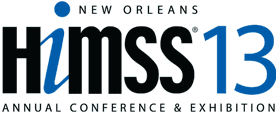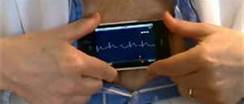Healthcare IT Predictions for 2014: Patient Engagement, Interoperability and the Value of Price Transparency
 Saturday, January 4, 2014 at 9:32AM
Saturday, January 4, 2014 at 9:32AM As 2013 comes to a close, we are excited to welcome the insights of top healthcare IT leaders in our Healthcare IT Predictions for 2014 blog series. So far we’ve heard from David Harlow, renowned healthcare lawyer, and John Lynn, prolific blogger on healthcare IT, EMR and HIPAA. Today, we welcome Janice McCallum, managing director of Health Content Advisors. Janice is a top authority on commercial applications across stakeholder groups and relevant sectors, including providers, clinicians, payers, life sciences, government and patients. At Health Content Advisors, Janice helps publishers and suppliers of healthcare information services develop effective marketing and business development strategies for reaching today’s clinicians and consumers.
1) What healthcare IT buzzwords will move to the center of conversation in 2014?
Patient engagement will continue to be a hot topic in 2014 because of the increased role that patients are playing in nearly every aspect of their healthcare. However, there’s not much clarity on the definition of “patient engagement”. Since the Meaningful Use program is a key driver of patient engagement initiatives; and since IT infrastructure is critical to Meaningful Use implementation, patient engagement is still very much a health IT issue. I’ve said many times that providing patients with access to their data is the most important element for providers that want to engage patients. But, patient engagement is just a first step in a process to rebalance the current information asymmetry between physicians and patients.
Leonard Kish coined the phrase: “Patient Engagement is the Blockbuster Drug of the Century” last year. I agree, but due to the range of interpretations of what it encompasses, I expect “patient engagement” to be the most overused and least understood buzzword in 2014.
2) Jacob Reider has taken over for Farzad Mostashari as Interim National Coordinator post at the ONC; what does the industry need most from the next leader?
Given the political environment, our next National Coordinator for Health IT will need have a rare mix of health IT knowledge, political savvy and management skills. To respond to concerns from provider organizations, I would recommend that the next ONC leader have some experience within a provider organization; ideally, someone who has dealt with implementing reporting systems for early stage Meaningful Use. Better yet, I’d like to see a new ONC leader who wants to put him or herself out of a job by helping to consolidate the various quality-reporting programs within HHS and encouraging industry associations to take over the leadership function for health IT standards.
3) What is your top prediction for Healthcare IT in 2014?
My top prediction is that the topic of price transparency will be paramount. Even though price is a business rather than an IT issue, provider IT systems need to be capable of providing reliable price estimates to patients, since an increasing number of providers require patients to pre-pay their copay portion of medical bills at check-in. We can’t expect patients to approve an unknown charge to their credit card or their bank account without some reasonable estimates of costs, although I have heard of plans by some providers to do just that! Price transparency also helps inform consumer choices about where to seek care and what care plans to choose.
4) What initiatives do healthcare stakeholders need to prioritize in order to reach true interoperability in 2014?
I’m not even sure how to define true interoperability. Common data standards are a huge part of facilitating data interoperability. But, different stakeholder groups will continue to have different data standards, especially when the different parties include research data, clinical data, patient-reported data and sensor data. Furthermore, a big part of the health information exchange problem stems from the incomplete nature of patient records in any single institution or network, errors in patient records, and the lack of unique IDs. The solution has to involve patient review and control of his/her own records.
This post was originally published at the Orion Health Blog on December 3, 2013.





